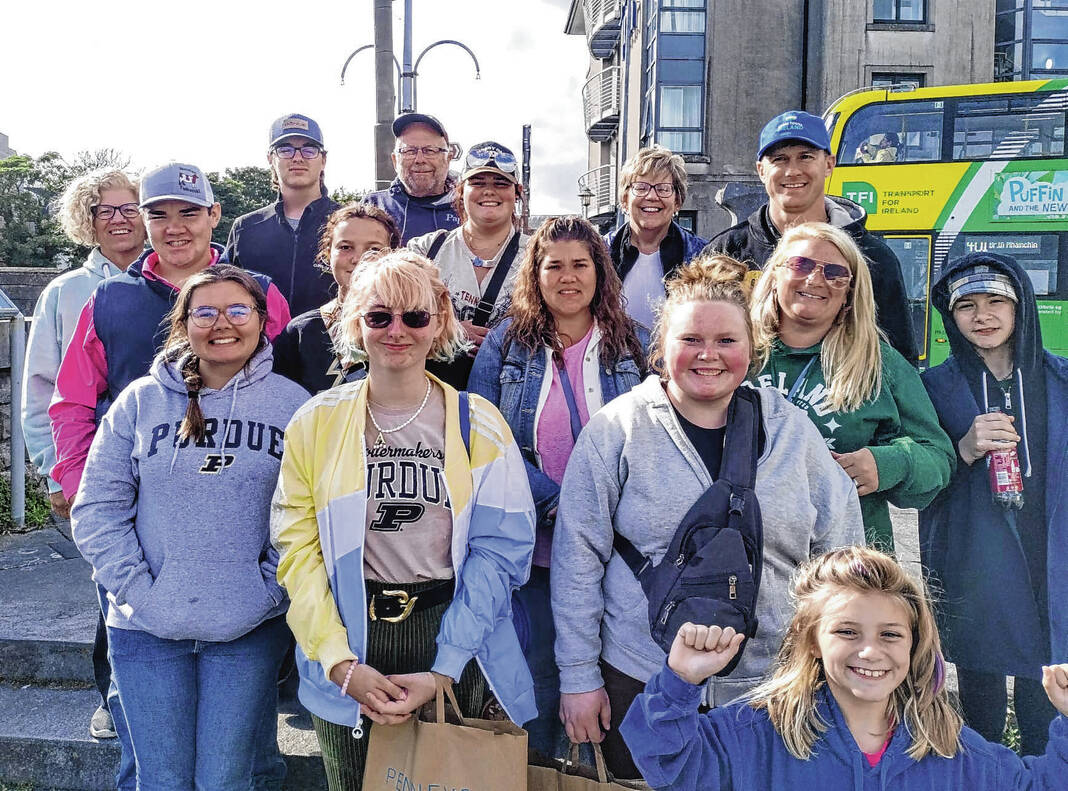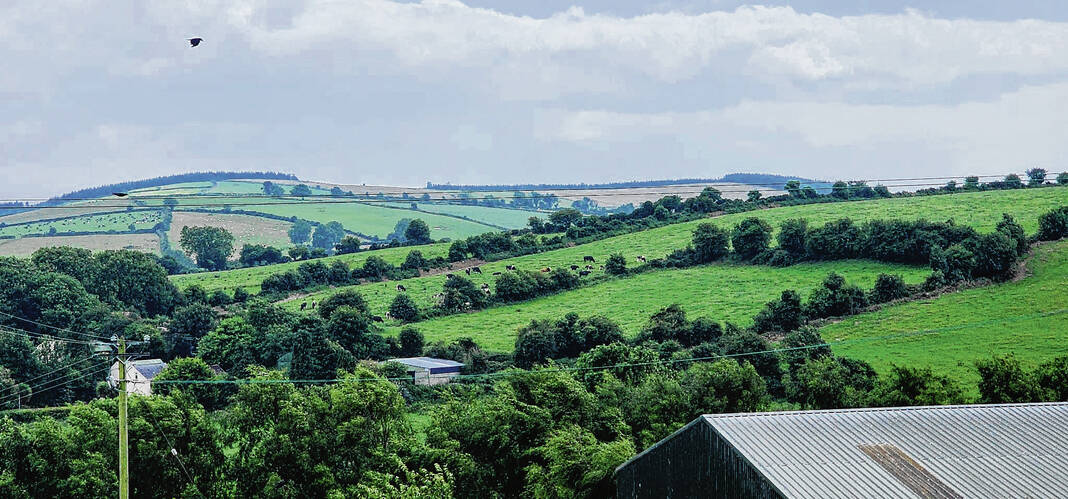Agricultural students at Franklin Community High School are fortunate enough to have a farm right outside their classroom.
This summer, though, they traveled across an ocean to learn about agriculture.
During a 10-day trip to Ireland this summer, seven students were immersed in the history of the Emerald Isle, the variety of crops grown there and how farming techniques used in Ireland differ from those seen in Indiana.
Alicia Geesey, agricultural science teacher and FFA advisor at the high school, planned the trip two years ago with a group called EF Educational Tours. FFA students raised about $4,000 from selling jams and strawberries to reduce the cost of the trip, which ended costing around $4,000 a student, Geesey said.
Students left for Dublin, the Irish capital, on June 26. There, they visited the National Museum of Ireland’s archaeology museum and natural history museum, along with EPIC The Irish Emigration Museum. The museum experiences were especially eye-opening for Anthony Zehr, a Franklin senior whose family is originally from Ireland.
“I found the archaeology museum fun. There was a section on Vikings who came from Scandinavian areas and invaded Ireland and sections of bodies they found in bogs. It was insane how much of the bodies were preserved,” Zehr said. “I remember also going to the natural history museum and they had a bunch on taxidermy native to Ireland. There was also a section on insects that fascinated me the most and marine life.”
From Dublin, the students traveled to the countryside, visiting a dairy farm, beef farm and apple orchard in Kilkenny. Afterwards, they traveled to Galway on the country’s west coast. Students visited a strawberry farm, an oyster farm, saw a sheep-herding demonstration and visited fields of peat, a turf material used for heating and fuel, Geesey said.
“They partnered us with other schools from around the country,” she said. “We partnered with a school from Nebraska, they’re more ranch kids, and it was nice understanding their perspective. We also partnered with a school from Washington state that had almost no agricultural background.”
Ireland has a more moderate climate, meaning farming is in season for more of the year, said Norman Tuholski, a senior at Franklin.
“I would say the most interesting thing is the way they ran their dairy farms,” Tuholski said. “Most of it is run by robot milkers and they rotate every so often. They only have a small amount of cows per acre because of the gases they let off. Also, the amount of grass cuttings they make for hay. They cut it every four weeks where we usually cut it every eight weeks. In Ireland, it’s always kind of cool and rainy, so they have the perfect climate to grow grass.”
The excursion was the first international trip for Samantha Barnes, a senior and president of Franklin’s FFA chapter.
“I liked visiting the cattle farms and the strawberry farms,” Barnes said. “I learned about the animal nutrition side of things.”
While pesticides are seen as a common part of gardening in the U.S., the trip helped Zehr realize some of the benefits of avoiding the practice.
“While some of the farms we went to used pesticides to varying amounts, the orchard doesn’t use pesticides,” Zehr said. “Hearing about how successful their plants do puts into perspective the benefits and downsides of using it during gardening.”
The trip was valuable in broadening the views of FFA students, Tuholski said.
“It gave me a new perspective on how agriculture works,” he said. “In the U.S. we use a lot of grain and they use almost no grain in a lot of their grass product. It gave me a new perspective on how much longer it takes animals to grow on just grass instead of with corn and oats and everything else we use in the U.S.”











